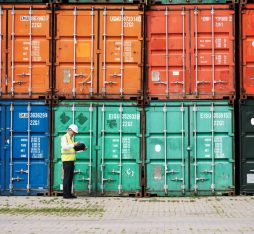● These tools provide operators with real-time data which enables them to adapt their waste valorisation strategies and optimize costs.
● They also detect sorting errors that can feature in awareness campaigns and dangerous objects like gas cannisters.
How do you know exactly what garbage trucks are collecting for recycling? What solutions are available for the precise analysis of waste streams? These questions are a real headache for public service operators such as local authorities, which are now required to recycle waste. “Until the early 2000s, no one wanted to know what happened on the market for waste, most of which was either buried or burned. Now the sector has to cope with the collection of separate streams and the drive to transform a volume industry into a precision industry”, explains Marjorie Darcet, a co-founder of Lixo. The French start-up creates cutting-edge solutions for waste collectors along with sorting and recycling centres, which make use of artificial intelligence to characterize waste in real time and generate data that is essential to waste valorisation strategies. Like its competitor Ficha, the company has developed technologies that combine computer vision and machine learning to enable its customers to track waste and keep up with what is happening on their value chains. These innovations have been welcomed as a godsend. In the waste management sector, which is subject increasingly strict rules and higher taxes, the data they generate has economic as well as environmental value.
We can recognize plastic water bottles, vegetable waste, cardboard and black bags with an accuracy of around 95%.
Recognizing waste in garbage trucks
To collect this data, Lixo has developed capture boxes with miniature cameras. Installed by collectors who operate garbage trucks, recyclers and sorting centres, these make use of image recognition algorithms that have been specifically trained to recognize waste. For its part, competing start-up Ficha is producing special sorting bins called cocoons, which have integrated waste recognition devices.
For both companies, a major challenge is to train algorithms to identify objects that are often very deformed. “We can recognize plastic water bottles, vegetable waste, cardboard and black bags with an accuracy of around 95%”, points out Marjorie Darcet. These systems have also been trained to detect certain rare objects, like gas canisters, on account of the danger they represent if they end up in a sorting bin. Ficha co-founder Hubert Ménard is keen to emphasize that his technology “provides for waste categorization by deriving statistics on the contents of bins, so as to detect sorting errors and areas where sorting has not done”.
Awareness campaigns to optimise operator costs
Assembled in France, Lixo capture boxes analyse and relay data in real time. The company founder points out: ”They function in extreme conditions, because the trucks, which can operate at -10°C in winter and up to 40°C in summer, are cleaned with high-pressure jets. The cameras have to cope with these conditions.” Relevant and representative data can be generated by equipping only part of a truck fleet: “We sell data and tools that enable operators to interpret it. For example, if a local authority realizes that 30% of waste collected in recycling bins should not be there, that 30% will weigh on the stream, adding to costs and never be recovered, whereas it should have been redirected to a pre-sorting centre.”
In France, the 2021-2027 National Waste Prevention Plan has established a target of a 15% per capita reduction in quantities of domestic and related waste, which will require awareness raising campaigns on a massive scale. This data can enable local authorities to adapt communications to include concrete elements that reflect the situation in the field, and operators like Veolia and Suez to draw attention to their performance. “Part of their remuneration is indexed on the quality of what is collected. They are not only paid for volume and the number of residents.” These players need to analyse and measure the quality of their waste streams. “If they do not want to call on a consultancy, which, in any case, will only analyse a dozen or so kilos, and not in real time. Our solution enables them to monitor 400 to 500 bins, weighing in at 30 to40 kg.”












